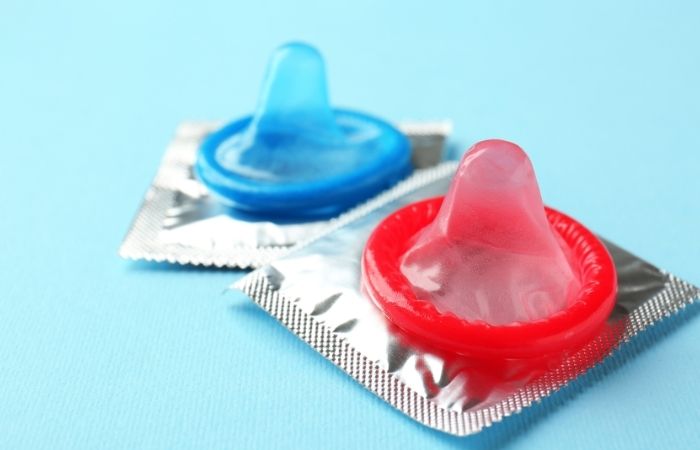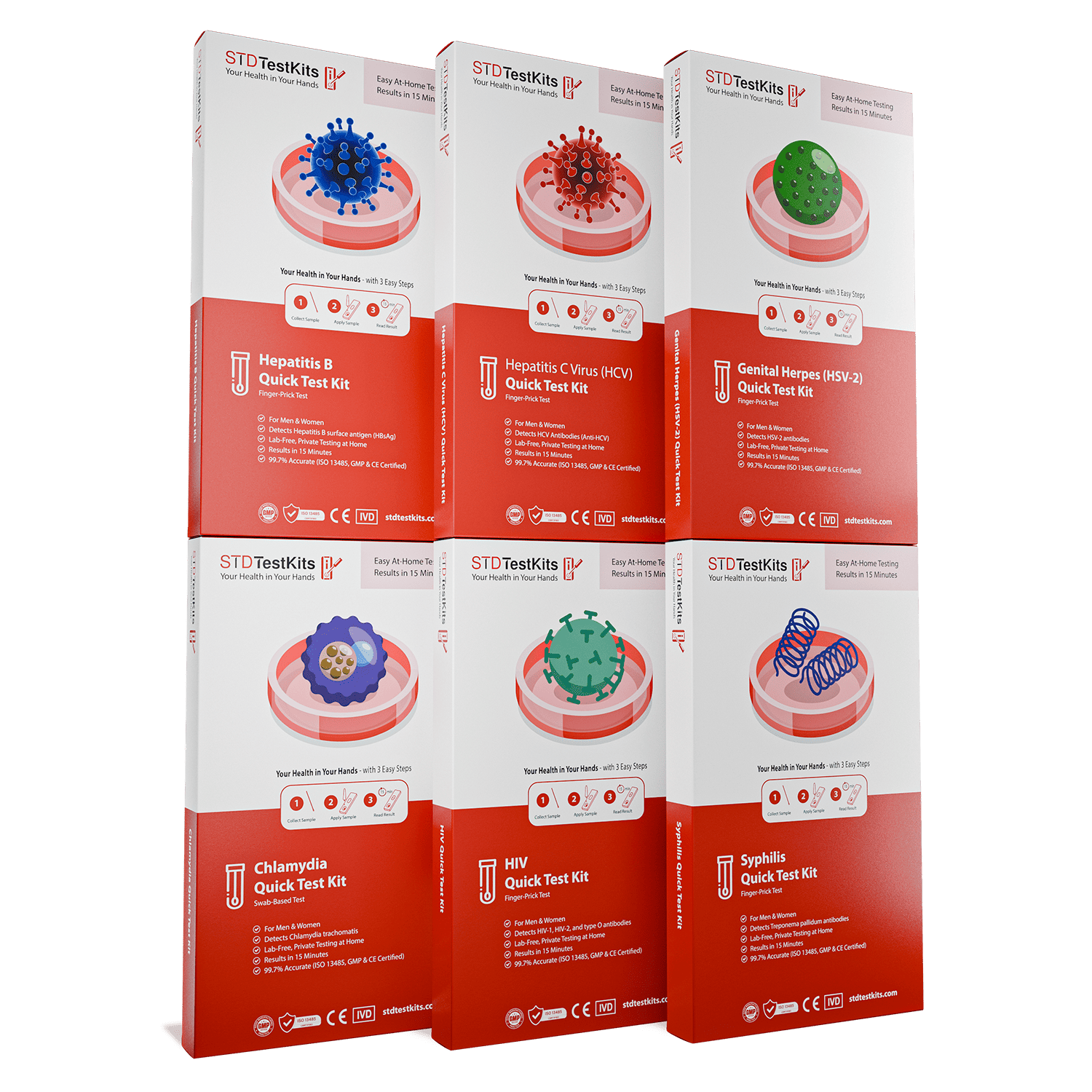Too Soon to Test? The Hepatitis B Window Period Explained
Quick Answer: Non-sex workers are statistically more likely to have undiagnosed STDs than sex workers due to infrequent testing, assumptions of safety, and lack of symptoms.
“I Thought I Was Safe”, When STD Risk Hides in Assumptions
There is a dangerous myth that people who aren't sex workers, have few partners, or are "in a relationship" are not at risk. This myth is common in casual conversation, dating apps, and even some clinic intake forms. But the truth is more complicated.
A CDC report from 2023 says that a large number of new STD cases happen in people who say they are in monogamous relationships or have few partners. Many professional sex workers, on the other hand, get tested regularly, usually once a month or once every three months, and use condoms with almost every partner.
That difference in behavior matters more than labels. You can have one partner and still be exposed, especially if they’re not monogamous, not testing, or don’t know they’re infected. Conversely, a sex worker who tests regularly and uses protection is often safer than someone in a relationship who assumes testing is unnecessary.

People are also reading: The Forgotten STD: Why No One Talks About Donovanosis (Until It’s Too Late)
Table: Risk Isn’t Just About Partner Count
Figure 1. Comparing testing behavior and protective practices across groups. The contrast reveals why non-sex workers may unknowingly carry untreated infections longer.
“I Was Engaged. I Didn’t Think I Needed to Test.”
Janelle, 32, had been with her fiancé for over three years. They were talking wedding dates when she noticed an unusual discharge and burning. She assumed it was a UTI. Her doctor ran a full panel, standard for new symptoms, and it came back positive for chlamydia.
“I was stunned. I hadn’t even thought about STDs in years. It felt like I’d been punched in the gut, not just by the diagnosis, but by the betrayal.”
After some painful conversations, it came out that her fiancé had been having unprotected sex with someone else. Janelle had never thought to get tested during their relationship because she believed monogamy was protection enough. It’s a common story, and one that drives up the rate of undiagnosed STDs in people who think they're safe.
Why Testing Frequency Changes Everything
Testing isn’t just about suspicion. It’s about prevention. Sex workers often build routine screening into their lives, not because they assume they’re infected, but because it’s a responsible part of their profession. The same logic doesn’t always apply to people outside that industry, where testing is still seen as something shameful or reserved for people with symptoms.
But here’s the truth: most STDs are asymptomatic. You can have chlamydia, gonorrhea, or even herpes without any noticeable signs. And if you’re not testing, you won’t know until complications, like pelvic inflammatory disease or infertility, show up years later.
Routine testing turns the unknown into something manageable. It’s not just about your own health, it’s about protecting your partners, your future, and your peace of mind.
What No One Tells You About “Low Risk” Behavior
The idea that being in a relationship, being straight, or having few partners automatically protects you from STDs is a myth. Here’s what actually puts people at risk:
- Lack of testing: Going years without an STD panel allows infections to spread silently.
- Partner assumptions: Believing your partner is monogamous without discussing testing.
- Symptom reliance: Waiting until something “feels off” to test (most STDs don’t cause obvious symptoms).
These behaviors are far more predictive of undiagnosed infection than job title or sexual orientation. That’s why non-sex workers, despite seeing fewer partners, can have higher cumulative risk over time if they never test.
Why “Normal” People Often Delay Testing
There’s a cruel irony at work here: the people who feel the safest often delay testing the longest. When you’re in a relationship, when you have a steady routine, when nothing “seems wrong”, it’s easy to believe you’re fine. But STDs don’t care about your assumptions. They don’t knock before entering.
This is especially true for people in what researchers call “perceived monogamy.” You may think you’re in a closed relationship, but unless you and your partner have both tested after your last outside exposure, and had a conversation about exclusivity, there’s risk. And if your last test was months (or years) ago? That’s an open door.
Contrast this with sex workers, who often test every 30 to 90 days, depending on local laws or clinic access. Their routines are built on proactive health, not reactive panic. In fact, some studies show that testing rates among sex workers can be 4–5 times higher than the general population.
Stigma in Healthcare: Who Gets Judged, Who Gets Ignored
Let’s talk about the doctor’s office. It’s not always the safe space we wish it were. Many non-sex workers avoid testing not because they don’t care, but because they’re scared of being judged. They’ve had providers who wince at the idea of casual sex. They’ve been asked invasive questions. They’ve been told, “You don’t look like the type.”
Meanwhile, sex workers, who face plenty of societal stigma, often develop strong advocacy skills in healthcare. They know what to ask for. They demand full panels. They know their rights. And perhaps most importantly: they expect to be tested. That changes everything.
This systemic gap means that non-sex workers, especially young women, queer people, and people of color, may not be offered testing at all. Even when they ask. Even when they have symptoms. The result? A silent epidemic of missed infections hiding under a layer of false security.
Who’s Actually Using Protection Consistently?
Let’s be honest. Condom use drops fast in most non-professional settings. A 2022 meta-analysis found that consistent condom use is reported in less than 30% of vaginal sex encounters among non-sex workers. That number is even lower in long-term relationships.
Compare that with many professional sex workers, who use condoms as a contractual norm, not a suggestion. And for oral sex, where barriers are even less common, sex workers are often more informed about relative risks (like gonorrhea transmission via throat).
It’s not about morality. It’s about tools. When you have education, access, and expectations that support safer sex, your outcomes improve. That’s true whether you’re a sex worker, a college student, or a married parent.

People are also reading: Syphilis vs Herpes: How to Tell the Difference
“I Work in Finance. I Got Syphilis.”
Marcus, 41, is a divorced father of two who hadn’t dated in five years. After reentering the dating world through apps, he started sleeping with a new partner. Neither of them used condoms. She said she was clean. He didn’t think to ask for proof.
“About three months later, I noticed a weird spot on my lip. I thought it was a cold sore. It wasn’t. My doctor ran tests, it came back positive for syphilis. I was shocked.”
Marcus had no idea his partner had slept with others while they were seeing each other. He’d never had an STD before and didn’t think he was “that kind of guy.” But STDs don’t discriminate. Marcus could’ve caught it months earlier with a routine test. Instead, he got treatment late, after exposing another partner.
Common Myths That Delay Testing
Figure 2. Beliefs that prevent timely STD diagnosis. These myths affect everyone, but hit non-sex workers harder because they’re often not questioned.
When Stigma Blocks Prevention
So many non-sex workers avoid testing because they’re afraid of what it “means.” They don’t want to explain it to their partner. They don’t want to feel dirty. They don’t want to look “promiscuous.” But here’s the truth: the most responsible thing you can do is test regularly, no matter your relationship status or sex life.
Sex workers have normalized testing because they’ve had to. Their health depends on it. It’s time for the rest of us to catch up, not because we should be scared, but because we deserve answers and autonomy.
If your head keeps spinning, peace of mind is one test away. This at-home combo STD test checks for multiple infections discreetly, without the stigma.
Access Isn’t the Problem, Awareness Is
We’re in an era where at-home STD testing is affordable, discreet, and fast. You can order a kit online, collect your sample in your bathroom, and get results in under 20 minutes or within a few days, without stepping into a clinic. But even with this level of convenience, many non-sex workers still don’t test. Why?
The answer isn’t access. It’s awareness and mindset. Many people believe that STDs are something “other people” get, people with “risky lifestyles,” people who “sleep around,” or people who “don’t care about their health.” These toxic assumptions leave thousands walking around with infections they don’t even know they have.
The good news? You don’t have to wait for symptoms or a scare. You can take control. Testing isn’t an admission of guilt. It’s an act of self-respect, and partner care. And now, it’s easier than ever.
How Risk Perception Skews Reality
Let’s talk psychology. Studies show that people are notoriously bad at judging their own STD risk. According to 2018 research on risk perception, individuals who report low partner counts and long-term relationships tend to significantly underestimate their exposure to sexually transmitted infections.
This leads to the most dangerous combination: false confidence and testing avoidance. People who think they're safe don’t test. People who test don’t spread infections unknowingly. See the pattern?
Meanwhile, professional sex workers often overestimate risk, and test accordingly. That’s not fear. That’s strategy. That’s why many sex workers catch infections early and treat them fast, while many non-sex workers delay, infect others, and only discover a problem when symptoms become severe.
Partnered But Unprotected: A Silent Risk
One of the most overlooked risk categories? People in new relationships who “trust” their partners. Whether it’s after two weeks or two months, many people stop using condoms when they feel emotionally close. But emotional trust is not the same as confirmed safety.
Unless both partners have tested since their last sexual exposure outside the relationship, you’re still in the dark. Even if it’s monogamous. Even if they swear they’re “clean.” (And let’s talk about that word in a second.)
Here’s how a safer scenario can look:
You start dating. You use condoms. After 4–6 weeks, you both take a full panel test (yes, both of you). You get results. Then you discuss whether to go barrier-free. This isn’t just about risk, it’s about mutual care, accountability, and sexual confidence.
Let’s Retire the Word “Clean”
Every time someone says “I’m clean,” they’re reinforcing the idea that STDs make someone dirty. That’s not just medically wrong, it’s dangerous. It stigmatizes people who’ve had infections (which includes millions), and it discourages honest conversations.
Being “clean” isn’t about having no STDs. It’s about being tested, informed, and responsible. That applies to everyone, whether you’re a sex worker, a Sunday school teacher, or someone in between. Language shapes behavior. Let’s shape it better.
And if you’re ready to get tested discreetly, you don’t have to wait. Visit STD Test Kits to find a solution that fits your lifestyle. Whether it’s a combo test, a single test, or a retest after exposure, it’s all here.

People are also reading: Dating Again at 40? Don’t Assume Your Doctor Will Test You for STDs
Testing Isn’t Just for “After Something Happens”
We need to stop treating STD testing like it’s a punishment or emergency brake. It should be as normal as a dental check-up. Sexually active people should test once or twice a year at minimum, more often if you have new or multiple partners.
Even if you use protection. Even if you feel fine. Even if you think you’re “low risk.” Routine testing is how you keep it that way. It’s not about catching something, it’s about confirming health and preventing transmission. Especially for STDs like HPV, herpes, or trichomoniasis, which often cause no obvious signs.
The more we normalize this, the fewer “surprise” diagnoses we’ll see. And the less shame people will feel around something as human as getting tested.
Sex Workers Aren’t the Problem, Stigma Is
Let’s say it loud: Sex workers are not the source of the STD epidemic. In fact, many are role models for how to engage in safer sex, regular testing, and communication. They often know more about transmission risk, window periods, and prevention than the average clinic-goer.
What fuels STD spread isn’t sex work, it’s stigma. Stigma makes people lie. It makes people hide symptoms. It makes people avoid clinics. It makes them delay testing. And that silence is the true driver of risk, not how many people you’ve slept with, or whether money was involved.
The sooner we shift from judgment to education, the safer everyone becomes.
FAQs
1. Are non-sex workers really more likely to have undiagnosed STDs?
It sounds backwards, but yes. People outside the sex industry are less likely to test regularly, and when you don’t test, you don’t catch things. So the numbers quietly build. You could be in a 5-year relationship and still have no idea an infection slipped in years ago.
2. Why do sex workers get tested more often than the average person?
Because for many of them, testing is as routine as brushing your teeth. It’s not about panic, it’s about professionalism, safety, and respect. Some test every month. That’s way more than most people in relationships ever do.
3. Can you really have an STD with zero symptoms?
Unfortunately, yes, and it’s more common than people think. Chlamydia, for instance, is nicknamed the “silent” infection for a reason. No itch. No burn. Nothing at all… until it causes complications. That’s why relying on symptoms alone is risky business.
4. I'm monogamous. Why would I need to test?
Monogamy isn’t a forcefield. Unless both of you tested after your last partners and haven’t had any new exposures, there’s still room for risk. And let’s be honest, sometimes people break agreements, and STDs are often the first clue. Testing keeps everyone honest and safe.
5. How often is “often enough” to get tested?
A good rule of thumb? At least once a year if you’re sexually active. Every 3 to 6 months if you have multiple or new partners. Some people test after every new partner, that’s not overkill, that’s smart. Especially when at-home options are quick and private.
6. Are condoms enough to protect me from everything?
Condoms are amazing, but they’re not magic. They protect against fluids, but not all skin-to-skin stuff. Herpes and HPV can still spread even with a condom. So yes, use them, but still test regularly.
7. What’s so wrong with saying “I’m clean”?
It might sound harmless, but it carries a punch. When you say “I’m clean,” you’re suggesting that anyone with an STD is dirty. That’s not just inaccurate, it fuels shame and stops people from getting tested. A better line? “I was last tested on [date] and here’s what I was screened for.” That’s real safety talk.
8. Can I get tested without visiting a doctor or a clinic?
Sure!You can order test kits online without any issue. Once you get it, all you need to do is take a sample and get your results.
9. Will insurance cover my test?
Sometimes, yes, especially if you go through a clinic or telehealth provider. But if you want total privacy, no paperwork, and zero questions, at-home kits are affordable and worth the peace of mind. Many cost less than a night out.
10. What do I do if I test positive?
First: breathe. You’re not gross, broken, or alone. Most STDs are treatable, and all are manageable. You’ll need to confirm the result, get treatment, and notify recent partners. It’s tough, but you’ve got options, and support. This isn’t the end of your sex life. It’s a detour, not a dead end.
You Deserve Answers, Not Assumptions
This isn’t about shaming relationships, jobs, or lifestyle. It’s about the gap between what we assume and what we test for. Non-sex workers aren’t “dirty” or careless, but too often, they’re left out of conversations about testing and prevention. That silence becomes risk.
Whether you’ve had one partner or a hundred, you deserve clarity. You deserve tools, not judgment. And you deserve care that fits your life, not someone else’s stereotype.
Don’t wait and wonder, get the clarity you deserve. This at-home combo test kit checks for the most common STDs discreetly and quickly.
How We Sourced This Article: We combined current guidance from leading medical organizations with peer-reviewed research and lived-experience reporting to make this guide practical, compassionate, and accurate. In total, around fifteen references informed the writing; below, we’ve highlighted four of the most relevant and reader-friendly sources.
Sources
1. Sexually Transmitted Infections (STIs) – WHO Fact Sheet
2. National Overview of STIs in the United States, 2023 | CDC
3. Sexually Transmitted Infections Surveillance 2022 Report | CDC
4. Global Perspectives on the Burden of Sexually Transmitted Diseases | PMC
About the Author
Dr. F. David, MD is a board-certified infectious disease specialist focused on STI prevention, diagnosis, and treatment. He blends clinical precision with a no-nonsense, sex-positive approach and is committed to expanding access for readers in both urban and off-grid settings.
Reviewed by: Sarah Nguyen, MPH | Last medically reviewed: September 2025
This article is for informational purposes and does not replace medical advice.







